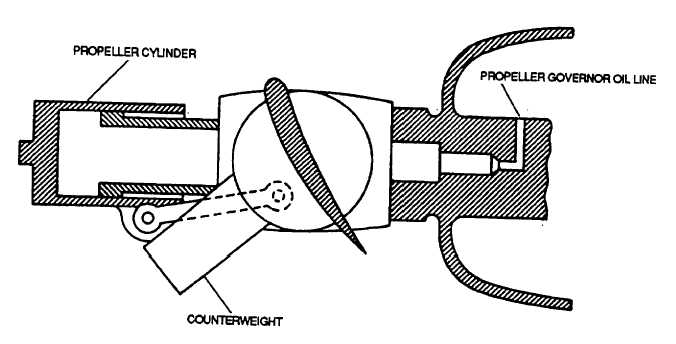TM 1-1500-204-23-5
c. Feathering Propeller. A feathering propeller is a
controllable propeller having a mechanism to change the
pitch to an angle so that forward aircraft motion produces
a minimum windmilling effect on a power-off propeller.
Feathering propellers must be used on multiengine
aircraft to reduce propeller drag to a minimum under
engine failure conditions.
d. Reverse-Pitch Propeller. The reverse-pitch
propeller is a controllable propeller in which the blade
angles can be changed to a negative value during
operation. The purpose of the reversible-pitch feature is
to produce a high negative thrust at low speed by using
engine power. Although reverse-pitch may be used in
flight for steep descents, it is used principally as an
aerodynamic brake to reduce ground roll after landing.
2-5. Propeller Efficiency. A propeller is used with an
engine to provide thrust. The engine supplies brake
horsepower through a rotating shaft. The propeller
absorbs the brake horsepower and converts it into thrust
horsepower. Propeller efficiency is the ratio of thrust
horsepower. Thrust horsepower usually constitutes
approximately 80 percent of the brake horsepower. The
other 20 percent is lost in friction and slippage.
Controlling the blade angle of the propeller is the best
method of obtaining maximum propeller efficiency for all
conditions encountered in flight.
2-6. Engine Efficiency. Mechanical, thermal, and
volumetric efficiency are explained in the following
paragraphs.
a.
Mechanical Efficiency. The mechanical
efficiency of an engine is measured by the ratio of the
shaft output or brake horsepower to the indicated
horsepower or power developed in the cylinders. It can
be expressed by the following formula:
Brake horsepower
Mechanical efficiency = Indicated horsepower
Figure 2-1. Hartzell Pitch Change Mechanism
2-4

